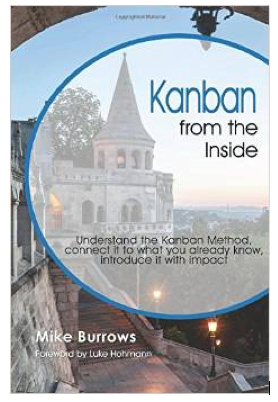In this series of short excerpts from my book Kanban from the Inside we’ve reached chapter 12, the second chapter of Part II (Models). As last time, this excerpt comes from near the end of the chapter. I must therefore explain for the uninitiated that POOGI is TOC’s Process Of Ongoing Improvement (acronyms are unavoidable here I’m afraid).
POOGI and the Five Focusing Steps
Like many Kanban trainers, I like to reference POOGI and the Five Focusing Steps when I teach Kanban. I particularly remember one class in which a small company’s entire middle management layer was in attendance. It dawned on us that if the company had a constraint (and surely it must), it had to be represented by one of those managers in the room.
All eyes turned to the finance manager. Everyone saw how important it was that she got what she needed when she needed it. Her colleagues resolved to remove from her and her small team its overhead of chasing for paperwork, clarifications, and corrections. Special priority would be given to activities that brought in cash. Everyone in the room determined that things were going to be better, not just for that team but for the company as a whole.
That’s a great story, but Kanban is not “POOGI with kanban boards.” The constraint—typically presented as some kind of bottleneck—is rarely the Kanban practitioner’s first line of attack. Get past the delicate issue that no person or team wants to be labeled a bottleneck, and you still have the problem of identifying them. How sure can you be of the location of your bottlenecks when WIP is high, there are orders-of-magnitude differences in lead times between work items, people can easily move between activities, and (give or take) everyone gives the impression of being equally busy?
Perhaps bottleneck should be added to that list of tools, concepts, and metaphors that don’t translate from manufacturing work to knowledge work quite as readily as some would have you believe. Chapter 14 identifies some more of those.
The bottleneck may not enjoy a first-class status in the Kanban Method, but POOGI will long continue to be taught. It promotes understanding, and there is still power in the idea that you need to keep on identifying and addressing your system’s constraints, especially when your mind is open to the possibility of much broader constraints—lack of knowledge, feedback, learning, trust, and so on, or the attachment to unhelpful ways of thinking.

